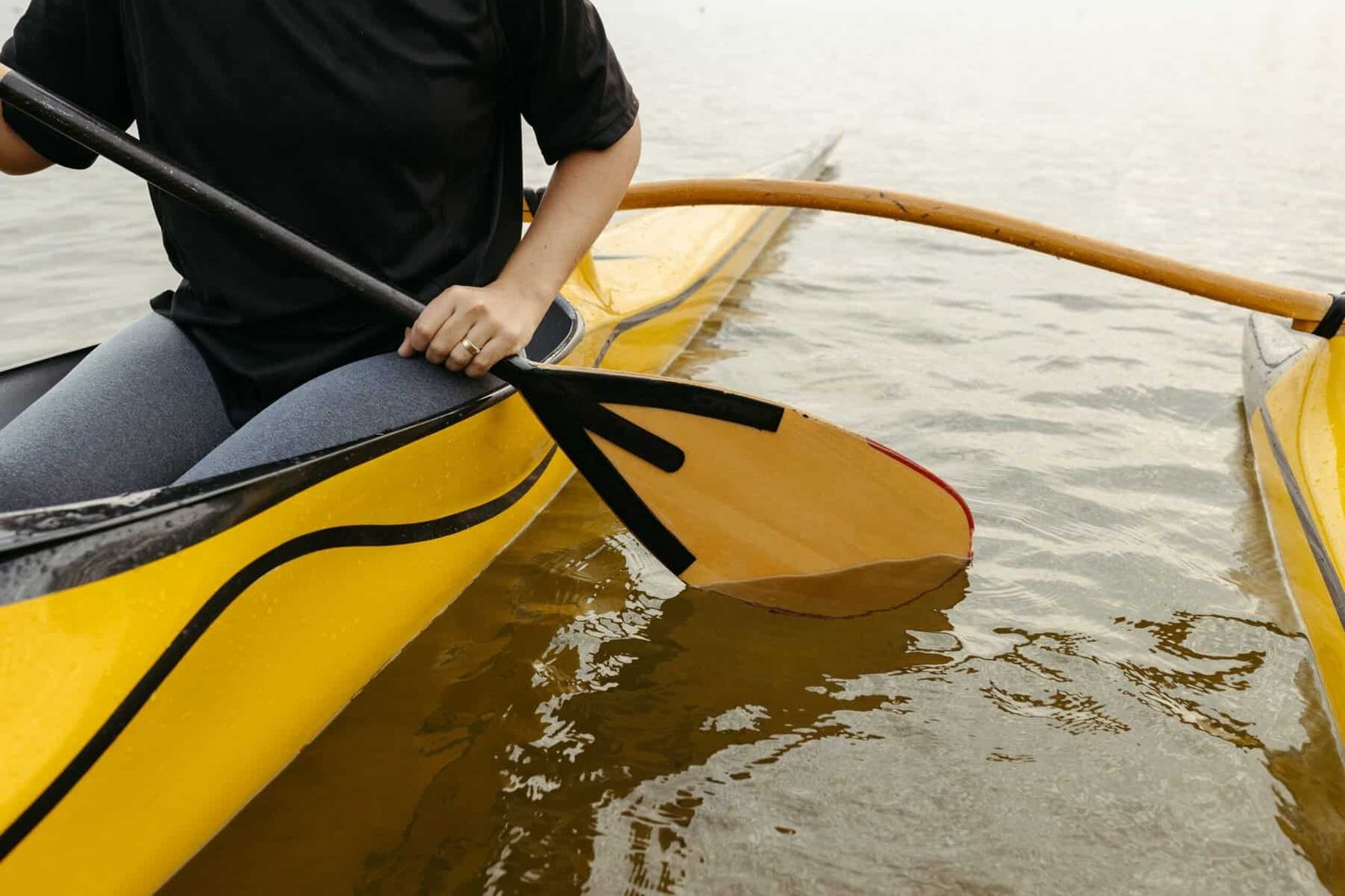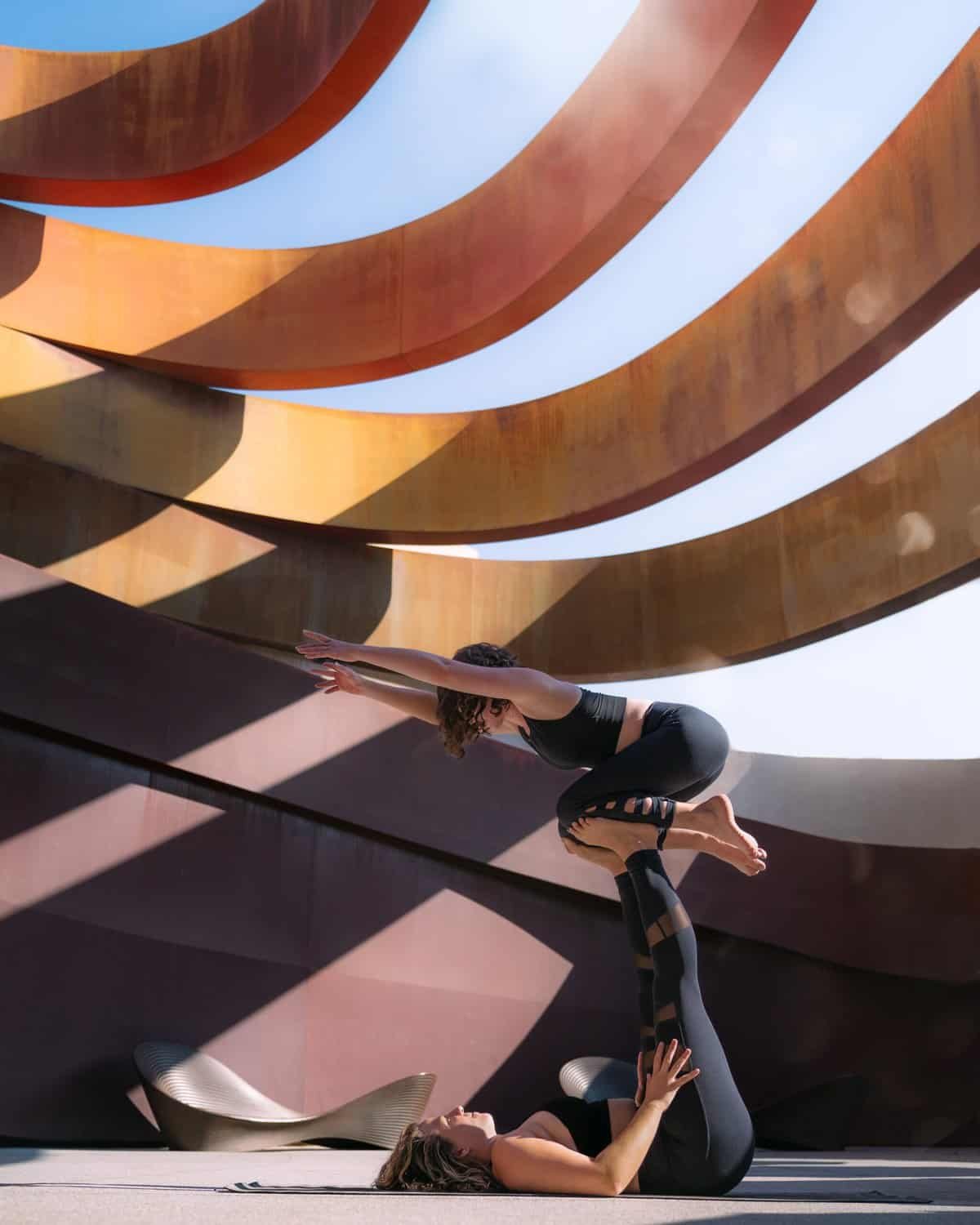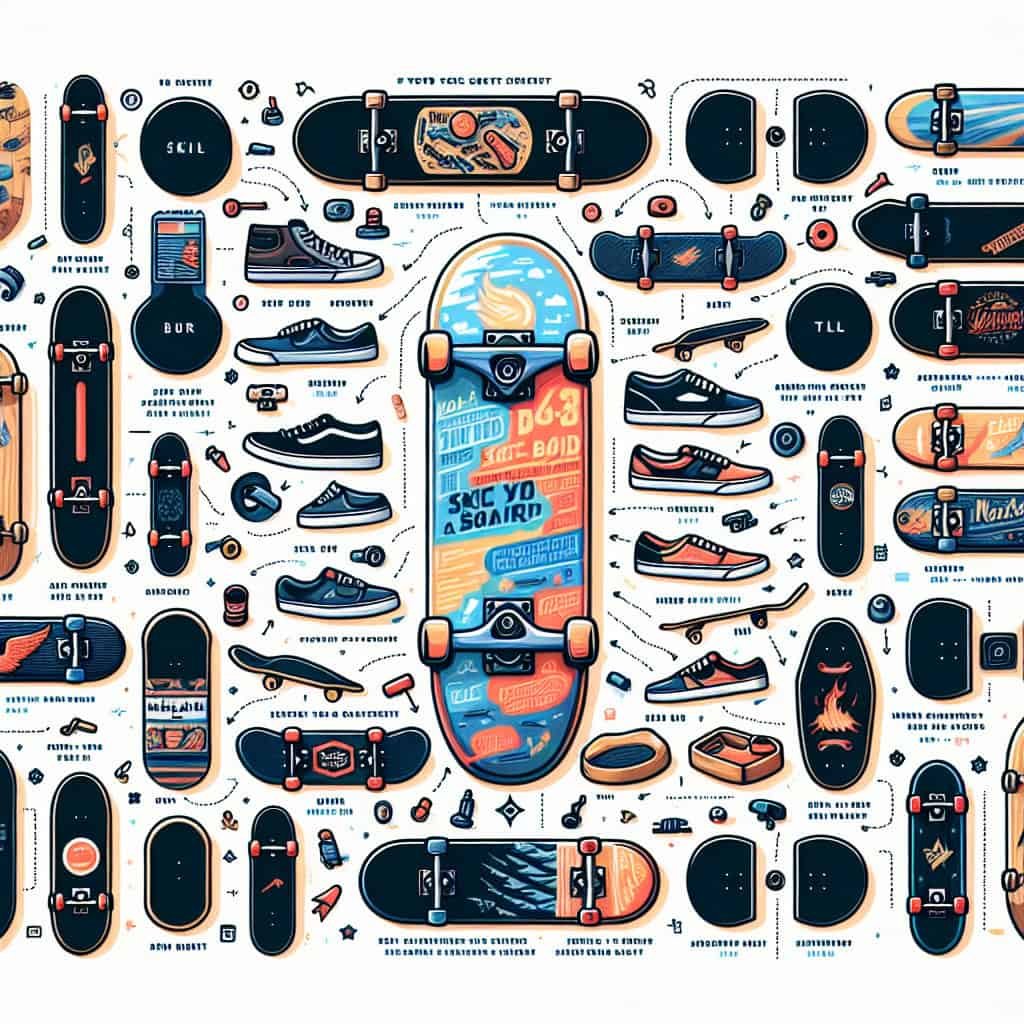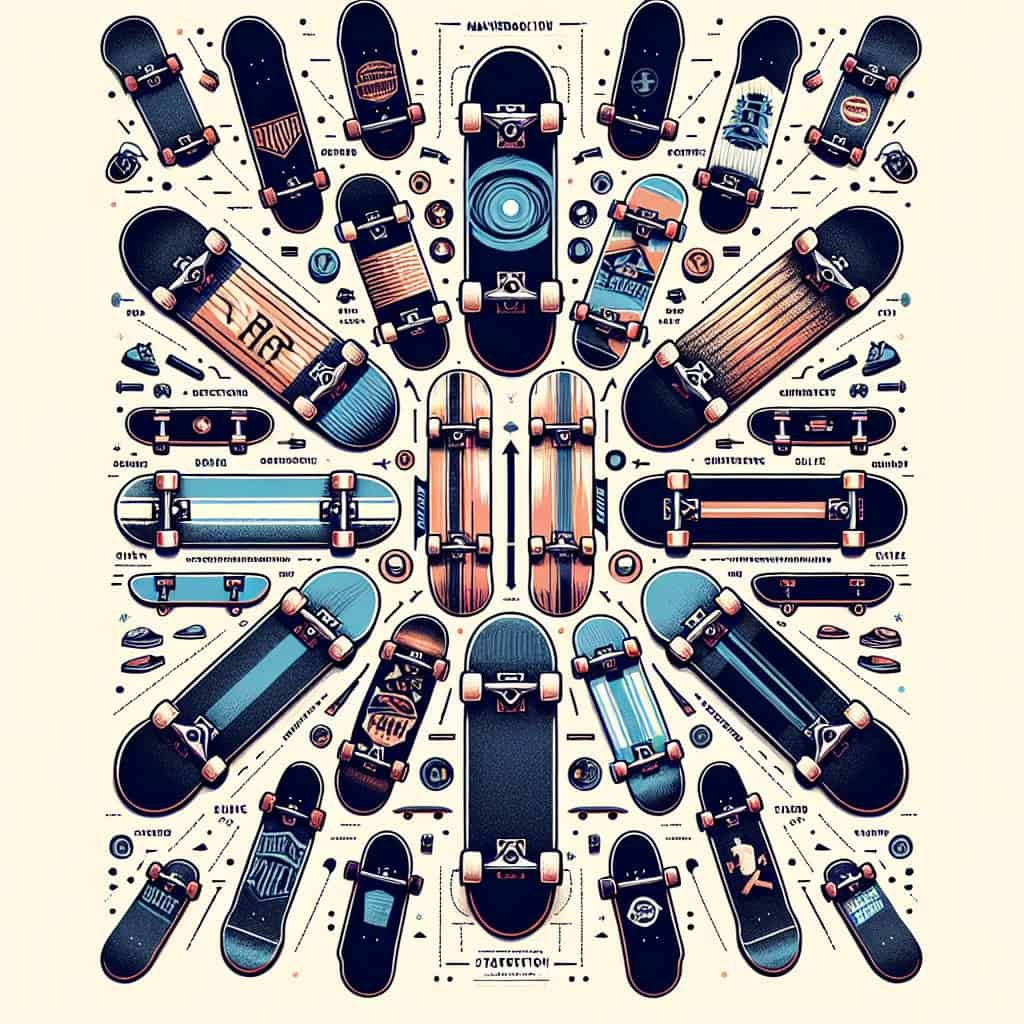Have you ever wondered how to choose the perfect skateboard for your skill level? Whether you’re a beginner looking to start skateboarding or an experienced rider seeking an upgrade, finding the right board can make all the difference in your performance and enjoyment. In this article, we’ll explore various factors to consider when selecting a skateboard that suits your skill level, allowing you to confidently navigate the skatepark or cruise down the streets with style and ease. So, let’s dive right in and uncover the secrets to finding your ideal skateboard match!
Consider Your Skill Level
Assess Your Current Skateboarding Skills
Before choosing the right skateboard, it’s important to assess your current skills. Take some time to evaluate your skateboarding abilities and determine what tricks you can do and what areas you still need to work on. Are you a beginner who is just starting to learn the basics or an experienced skater looking to improve your skills? Knowing where you currently stand in terms of skateboarding proficiency will help guide your decision-making process.
Determine Your Skill Level
Once you have assessed your current skills, it’s time to determine your skill level. Skateboarding skills can be broadly categorized into three levels: beginner, intermediate, and advanced. This classification allows you to choose a skateboard that is suitable for your skill level and will help enhance your skateboarding experience. Be honest with yourself about your abilities and choose a skateboard that matches your skill level.
Understand Different Skill Levels in Skateboarding
Understanding the different skill levels in skateboarding is crucial in choosing the right skateboard. Here’s a breakdown of each level:
Beginner: As a beginner, you are just starting out and may be mastering the basics such as pushing, riding comfortably, and learning to turn. Choose a skateboard that offers stability and control to help you build a solid foundation.
Intermediate: If you have progressed beyond the basics and can confidently perform advanced tricks like ollies and kickflips, you fall into the intermediate category. Look for a skateboard that provides a balance between stability and maneuverability, allowing you to progress further in your skills.
Advanced: Advanced skaters have a wide range of skills and can perform complex tricks and maneuvers. For these skaters, it’s important to choose a skateboard that meets their specific needs and preferences, whether it’s for street skating, vert, or park riding.
Identify Your Riding Style
Determine Your Preferred Skateboarding Style
Skateboarding offers various styles, and identifying your preferred style is essential in choosing the right skateboard. Are you more inclined towards cruising the streets, performing tricks at the skatepark, or maybe you’re interested in longboarding for transportation? Determine which style appeals to you the most, as it will influence your choice of skateboard type and components.
Choose the Right Type of Skateboard for Your Riding Style
Once you’ve identified your preferred skateboarding style, it’s time to choose the right type of skateboard that suits your needs. Here are some of the different types of skateboards available:
Street Skateboards: Designed for tricks and maneuvers on urban environments like skateparks, streets, and stair sets.
Cruiser Skateboards: Ideal for cruising and commuting, cruiser skateboards are typically larger and have softer wheels, making them more comfortable for longer rides.
Longboards: Longboards are primarily used for transportation and downhill riding. They have longer decks and larger, softer wheels for stability and smoothness.
Old School Skateboards: Inspired by the skateboards of the 70s and 80s, old school skateboards are known for their wider decks and larger wheels, making them suitable for cruising and pool/vert riding.
Electric Skateboards: Powered by an electric motor, electric skateboards offer a motorized option for cruising or commuting, making them a great choice for those seeking convenience and speed.
Consider your riding style and choose the type of skateboard that best aligns with your preferences and skateboarding goals.

Know the Different Types of Skateboards
Street Skateboards
Street skateboards, also known as trick skateboards, are designed for performing tricks and maneuvers on urban environments like skateparks, streets, and stair sets. They typically have a shorter deck length and a narrower width, allowing for maximum maneuverability and responsiveness. Street skateboards usually have medium-sized, hard wheels that provide excellent grip and control for executing tricks.
Cruiser Skateboards
Cruiser skateboards are perfect for those who enjoy cruising and commuting. They have larger, more stable decks that provide a comfortable ride. Cruiser skateboards often feature softer, larger wheels that absorb vibrations from rough surfaces, making them suitable for longer rides. These skateboards are ideal for transportation and offer a smooth, enjoyable cruising experience.
Longboards
Longboards are primarily used for transportation and downhill riding. They have longer decks that offer more stability and wider wheels for increased traction. Longboards are designed to provide a smooth and comfortable ride, making them perfect for longer distances. They are a popular choice for riders looking for a relaxed and laid-back cruising experience.
Old School Skateboards
Old school skateboards draw inspiration from the skateboarding era of the 70s and 80s. They typically feature wider decks, allowing for a more stable ride. These skateboards are commonly used for cruising and pool/vert riding. Old school skateboards often have larger, softer wheels that provide a smoother ride on rougher surfaces.
Electric Skateboards
Electric skateboards offer a motorized option for cruising or commuting. They are powered by an electric motor and can reach higher speeds than traditional skateboards. Electric skateboards are a great choice for those seeking convenience and speed in their daily transportation. However, they require regular charging and maintenance.
Knowing the different types of skateboards will assist you in choosing the right one that aligns with your riding style and preferences.
Consider the Size of the Deck
Deck Width
The width of the skateboard deck is an essential factor to consider when choosing the right skateboard. It affects stability, control, and your ability to perform tricks. Deck widths typically range from 7.5 inches to 8.5 inches or more.
For beginners or those with smaller shoe sizes, a narrower deck is usually recommended as it provides better control and maneuverability. As one progresses and develops a preference for specific skating styles, a wider deck may be more suitable for stability and landing tricks.
Deck Length
The length of the skateboard deck contributes to its overall stability and balance. Longer decks are generally more stable, but they may sacrifice maneuverability. On the other hand, shorter decks offer increased maneuverability but can be less stable, especially at higher speeds.
Consider your riding style and preferences when deciding on the length of your skateboard deck. If you plan to cruise or commute, a longer deck might be preferable for stability. If you focus on tricks and technical maneuvers, a shorter deck could provide the maneuverability you need.
Concave and Steepness
The concave of a skateboard deck refers to the curve of the board from side to side. It affects how your feet sit on the board and provides additional control. Decks with a deeper concave offer more foot grip, which can be beneficial for performing complex tricks. Flatter decks, on the other hand, provide a more comfortable and stable platform for cruising and transportation.
The steepness of the skateboard deck’s concave is also worth considering. Steeper concaves offer more precise foot placement and control for technical tricks, while milder concaves provide a more relaxed and comfortable feel.
Evaluate different deck sizes, concave types, and steepness options to find the skateboard deck that best suits your preferences and style of skating.

Evaluate the Trucks
Truck Width
Trucks are the metal components that attach the wheels to the skateboard deck. The width of the trucks should match the width of the skateboard deck to ensure proper alignment and performance. Choosing the right truck width is crucial for stability and control.
For standard skateboard decks, trucks that have an axle width that matches the deck width are recommended. If you prefer a wider deck, wider trucks would be more suitable for maintaining stability and preventing wheel bite. Conversely, narrower trucks work well for narrower decks, providing enhanced maneuverability.
Truck Height
Truck height determines the distance between the skateboard deck and the wheels. Low trucks offer a lower center of gravity, providing better stability. They are commonly used for street skating and performing tricks. High trucks, on the other hand, allow for larger wheels and are often preferred by riders who prioritize cruising and transportation.
Consider your riding style and the type of skateboard you’ve chosen when selecting the appropriate truck height.
Truck Material
Trucks are typically made from aluminum alloy, which combines strength, durability, and lightweight properties. High-quality trucks ensure a smooth ride and excellent performance. Be sure to choose trucks from reliable brands to ensure durability and optimal skateboarding experience.
Evaluate different truck options, taking into account their width, height, material, and brand reputation to find the trucks that suit your riding style and preferences.
Choose the Right Wheels
Wheel Diameter
The diameter of skateboard wheels influences the speed, acceleration, and overall performance of the skateboard. Wheels range in size from small (50mm to 53mm) to medium (54mm to 59mm) to large (60mm and above).
Smaller wheels offer faster acceleration, easier maneuverability, and are well-suited for technical skating and street tricks. Medium-sized wheels provide a good balance between speed and maneuverability, making them suitable for various skateboarding styles. Larger wheels offer more speed and a smoother ride, making them ideal for cruising and longboarding.
Consider your preferred skateboarding style and the terrain you’ll be riding on when selecting the appropriate wheel diameter.
Wheel Hardness
Wheel hardness is measured using a durometer scale, usually indicated by a number followed by the letter “A.” Softer wheels have a lower durometer rating (78A to 87A), while harder wheels have a higher durometer rating (88A and above).
Softer wheels provide more grip and traction, making them suitable for cruising, rough surfaces, and street skating. Harder wheels offer less grip but provide greater speed and smoother slides, making them ideal for park skating and performing technical tricks.
Determine the type of skating you’ll be doing and the surfaces you’ll be riding on to select the appropriate wheel hardness.
Wheel Shape
Skateboard wheels come in various shapes, including square-edged, round-edged, and conical. Each shape affects performance differently.
Square-edged wheels offer stability and grip, making them suitable for technical tricks and ramps. Round-edged wheels provide a balanced combination of grip and slide, making them versatile for different skating styles. Conical wheels have a smaller surface area, allowing for easier slide initiation and technical tricks.
Consider your preferred skateboarding style and the specific tricks you’ll be performing when choosing the shape of your skateboard wheels.

Consider the Bearings
ABEC Ratings
ABEC ratings determine the precision and smoothness of skateboard bearings. The scale ranges from ABEC 1 to ABEC 9, with higher numbers indicating greater precision. However, it’s important to note that ABEC ratings are not the sole factor in determining the performance of skateboard bearings. Other factors, such as bearing material and construction, also contribute to overall quality.
For most skateboarders, bearings with ABEC 5 or 7 ratings provide a good balance of performance and affordability. These ratings offer smooth rides and solid durability. Higher ABEC ratings like 9 are available for those seeking the utmost precision, but they may come at a higher cost.
Material and Construction
Skateboard bearings are typically made from steel or ceramic. Steel bearings are more affordable and suitable for most skateboarders, providing durability and good performance. Ceramic bearings, on the other hand, offer enhanced speed and decreased friction but come at a higher price point.
Consider your budget and skateboarding goals when choosing the material and construction of your skateboard bearings.
Factor in Your Weight
Deck Durability and Weight Limit
Different skateboards have varying weight limits, including the maximum weight the deck can support. It’s crucial to consider your weight when choosing a skateboard to ensure its durability and longevity. Exceeding the weight limit can result in deck damage and compromise your safety while riding.
Review the specifications provided by skateboard manufacturers to determine the weight limits for each skateboard option you’re considering. Choose a skateboard that comfortably accommodates your weight range.
Consider Your Own Weight
In addition to considering the weight limits of skateboard components, it’s important to factor in your own weight when selecting a skateboard. Your weight can affect the overall performance, stability, and maneuverability of the skateboard.
Heavier riders might benefit from wider decks, larger wheels, and trucks with higher weight capacities for better stability and control. Lighter riders, on the other hand, may prefer narrower decks, smaller wheels, and trucks designed for lighter weight individuals to maximize maneuverability.
Take your weight into account when making decisions about deck size, wheel diameter, and truck specifications to ensure optimal performance.

Take Your Budget into Account
Determine Your Budget Range
Set a budget range before you start looking for a skateboard. Skateboards have a wide price range depending on their components, materials, and brands. Determine how much you are willing to spend to find the best skateboard that suits your preferences and needs.
Research and Compare Prices
Once you have determined your budget range, it’s essential to conduct thorough research and compare prices. Look for reputable skateboarding brands that offer quality products within your budget. Consider visiting local skate shops and online retailers to compare prices and read reviews from other skateboarders.
Finding the right skateboard within your budget will ensure that you are getting the best value for your money and will enhance your overall skateboarding experience.
Seek Advice from Others
Consult with Skaters at Local Skate Shops
Local skate shops are a great resource to tap into when choosing the right skateboard. Skaters working at these shops are often experienced and knowledgeable in the field. They can provide valuable advice, recommend suitable skateboard options based on your skill level and riding style, and address any concerns or questions you may have.
Take advantage of their expertise and engage in conversations about skateboarding. Their insights can guide you towards making an informed decision.
Join Skateboarding Communities and Forums
Online skateboarding communities and forums offer a wealth of information and support. Engage with fellow skateboarders, ask questions, and share experiences. These platforms provide an opportunity to learn from experienced individuals who can offer valuable advice on choosing the right skateboard based on their own experiences.
Participating in these communities and forums will not only expand your knowledge but also allow you to connect with like-minded individuals who share your passion for skateboarding.
In conclusion, choosing the right skateboard for your skill level is crucial for a safe and enjoyable skateboarding experience. Assess your current skills, determine your riding style, understand the different types of skateboards, consider the size of the deck, evaluate the trucks, choose the right wheels and bearings, factor in your weight, take your budget into account, and seek advice from others. By following these steps, you’ll be well on your way to finding the perfect skateboard that suits your needs, preferences, and skill level. Happy skateboarding!


